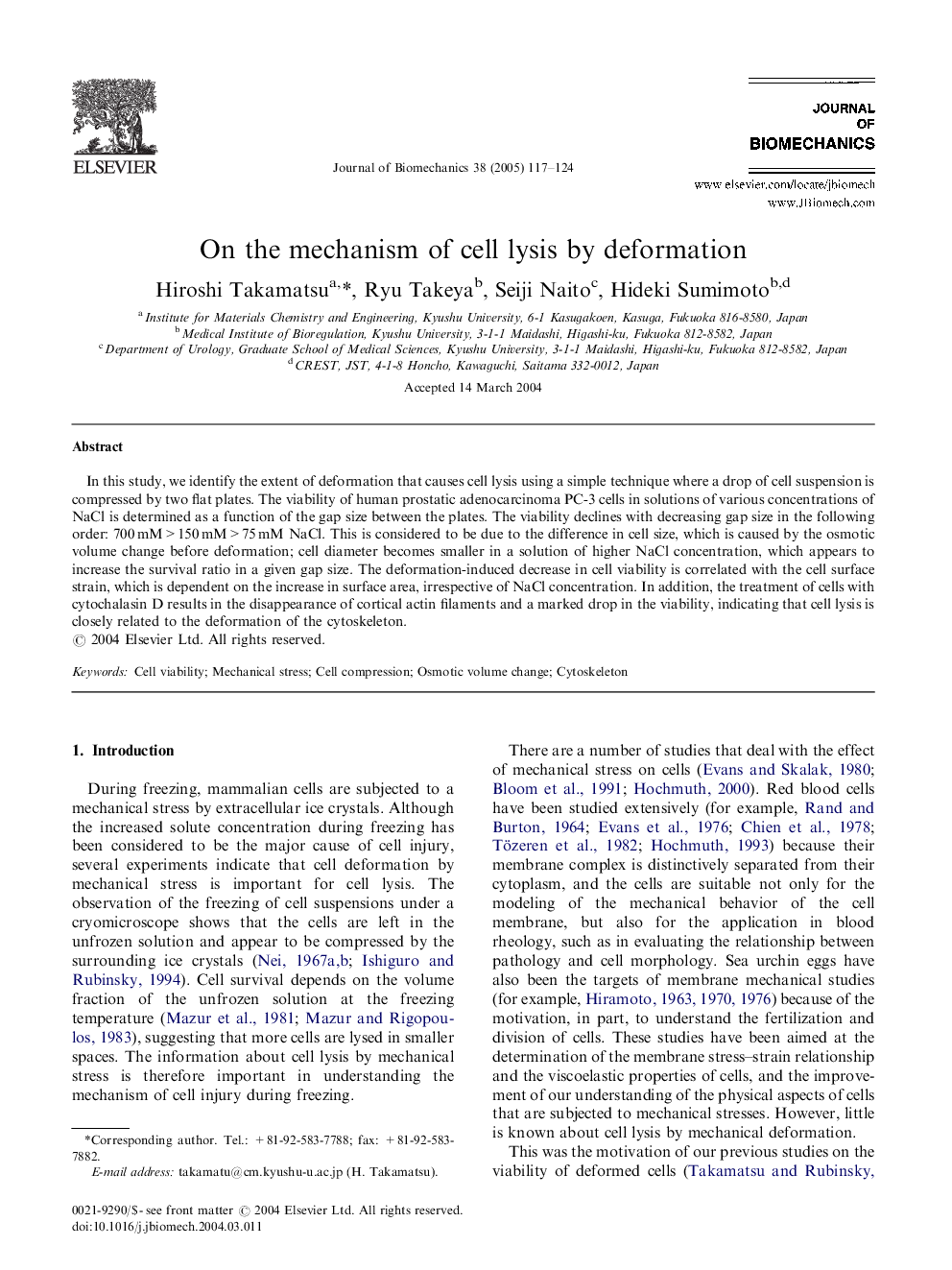| Article ID | Journal | Published Year | Pages | File Type |
|---|---|---|---|---|
| 10434563 | Journal of Biomechanics | 2005 | 8 Pages |
Abstract
In this study, we identify the extent of deformation that causes cell lysis using a simple technique where a drop of cell suspension is compressed by two flat plates. The viability of human prostatic adenocarcinoma PC-3 cells in solutions of various concentrations of NaCl is determined as a function of the gap size between the plates. The viability declines with decreasing gap size in the following order: 700Â mM>150Â mM>75Â mM NaCl. This is considered to be due to the difference in cell size, which is caused by the osmotic volume change before deformation; cell diameter becomes smaller in a solution of higher NaCl concentration, which appears to increase the survival ratio in a given gap size. The deformation-induced decrease in cell viability is correlated with the cell surface strain, which is dependent on the increase in surface area, irrespective of NaCl concentration. In addition, the treatment of cells with cytochalasin D results in the disappearance of cortical actin filaments and a marked drop in the viability, indicating that cell lysis is closely related to the deformation of the cytoskeleton.
Related Topics
Physical Sciences and Engineering
Engineering
Biomedical Engineering
Authors
Hiroshi Takamatsu, Ryu Takeya, Seiji Naito, Hideki Sumimoto,
